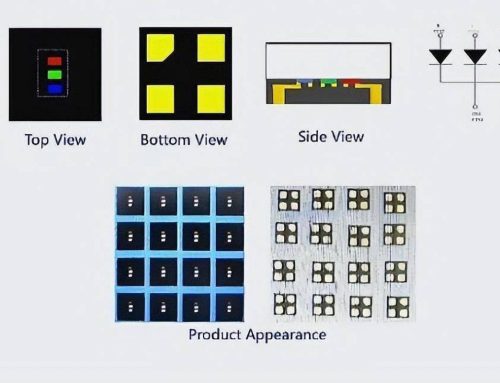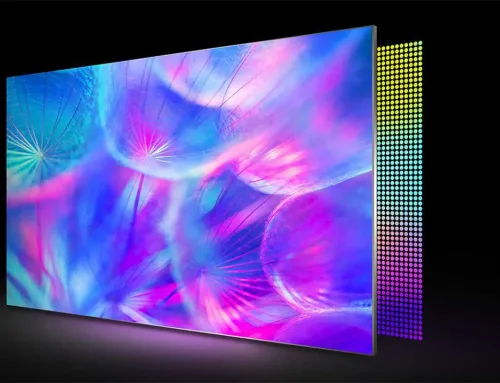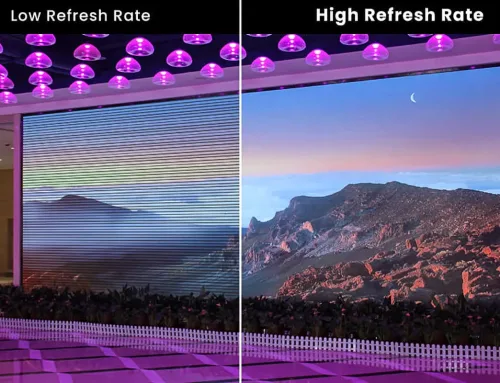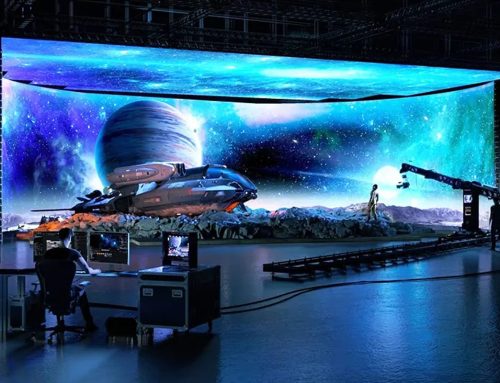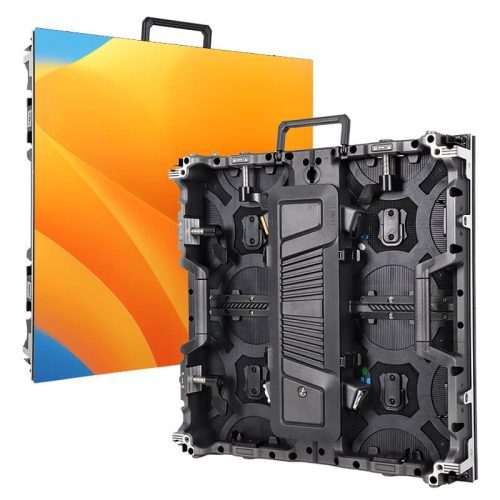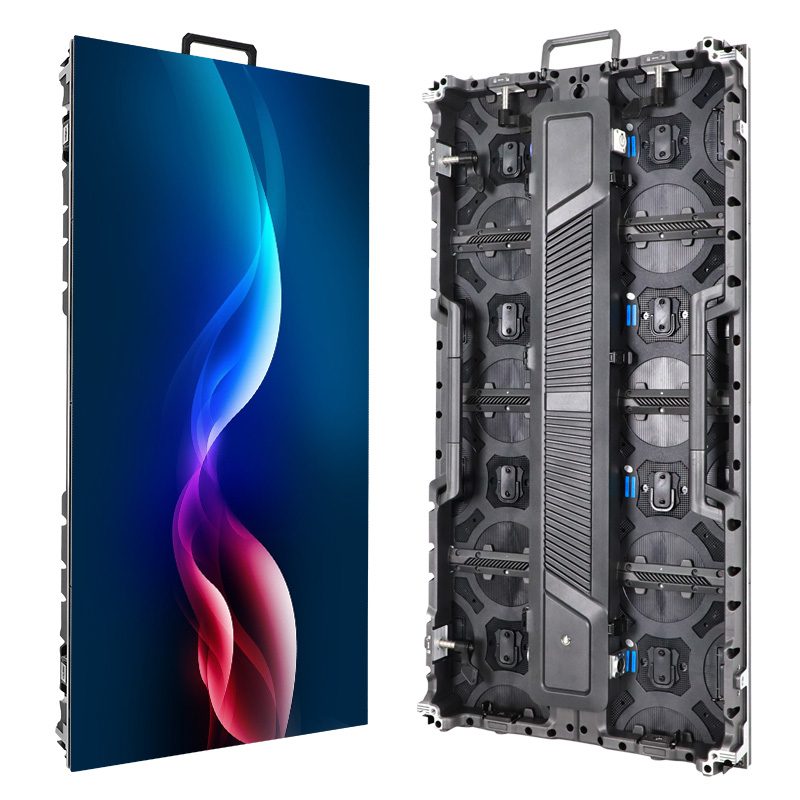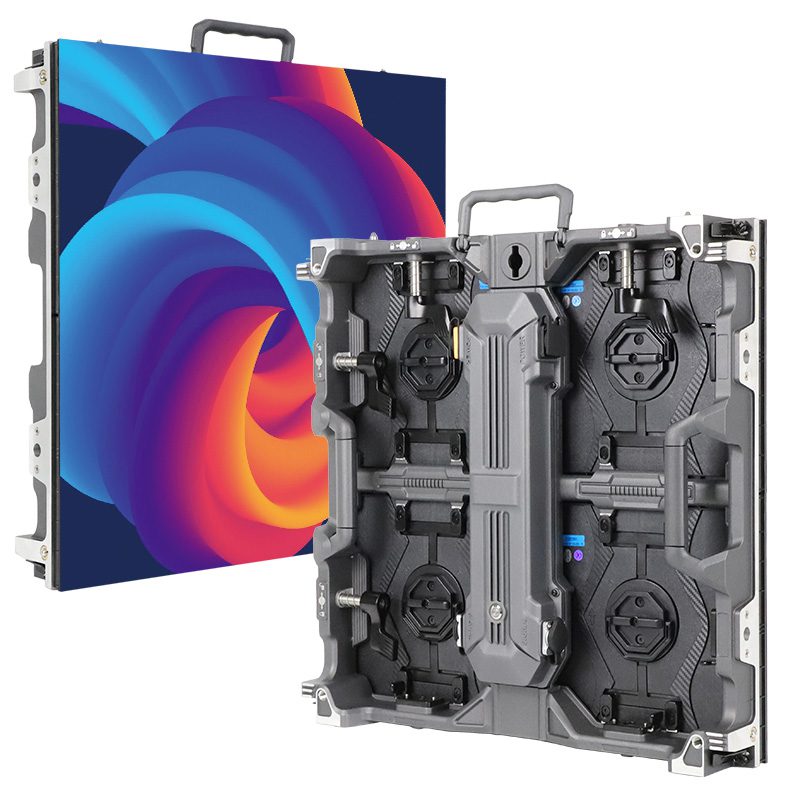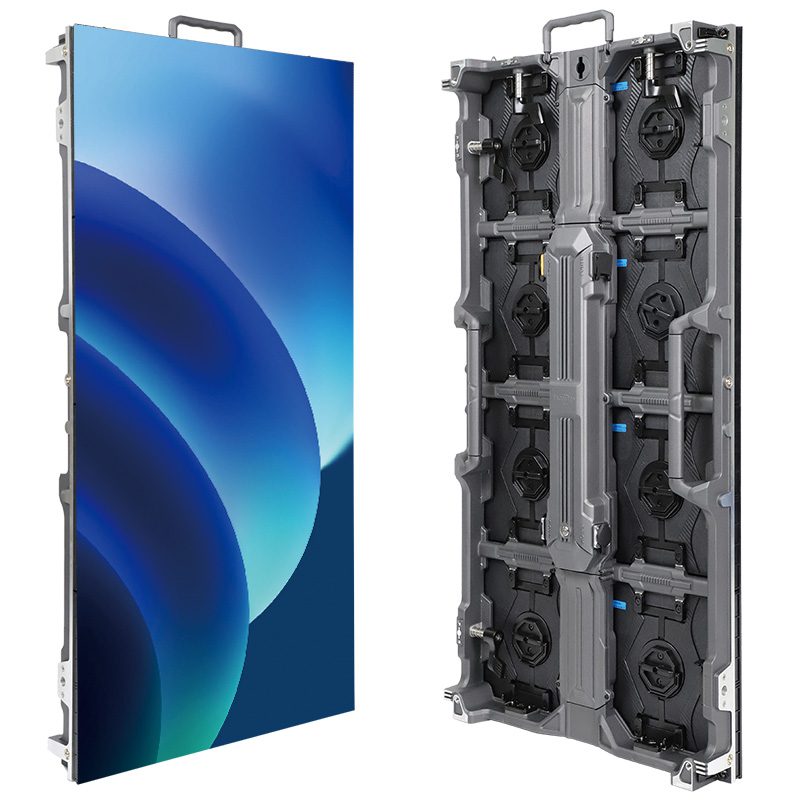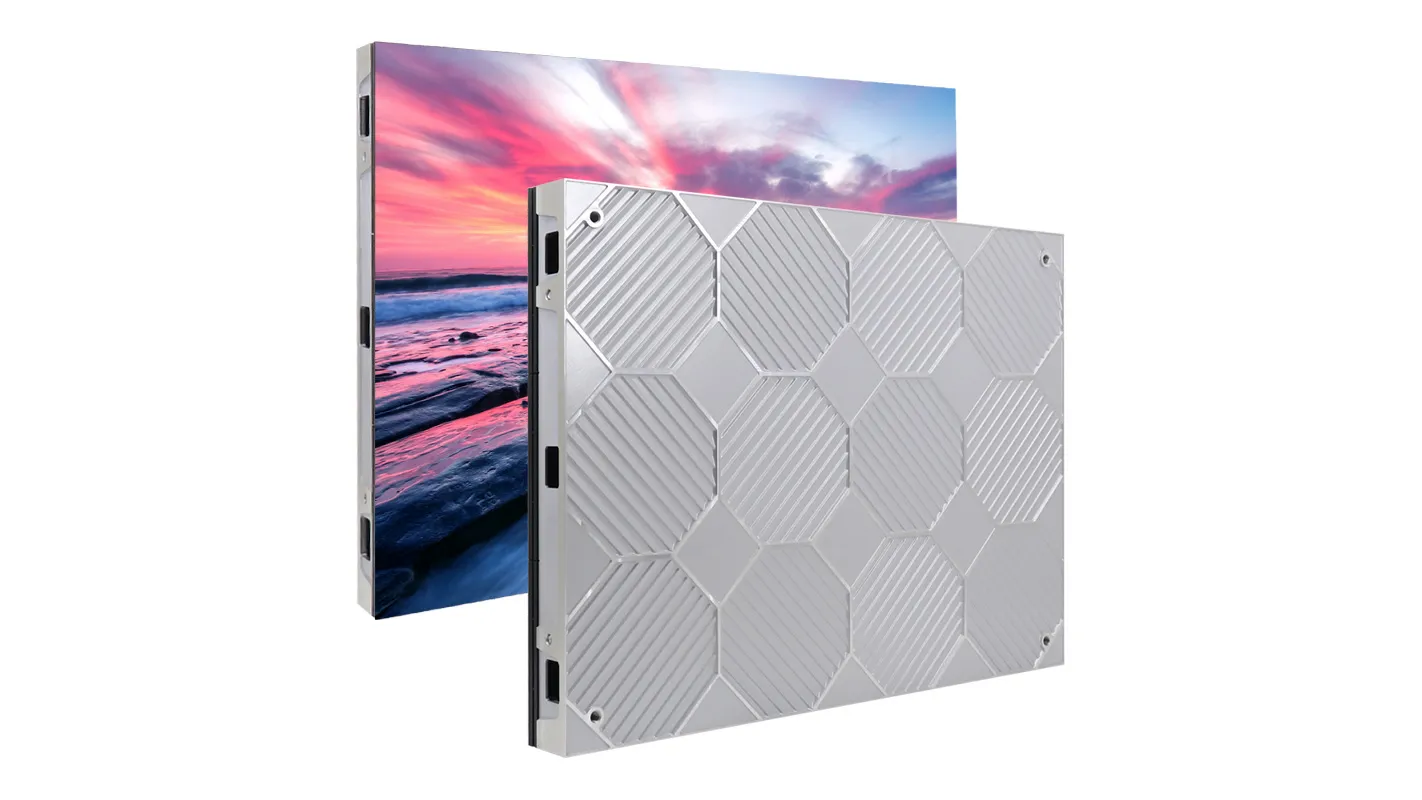As a cinema decision-maker planning to upgrade your theater or start a new project ? choosing a giant screen is often a key step to stay competitive. But with so many “giant screen” solutions on the market—from traditional projection systems to branded formats like IMAX, or even cinema LED screen—you may be wondering: Which technology truly fits my theater? What’s the return on investment?
catalogue
1. What is a giant screen called?
A giant screen refers to a display with a large viewing area, commonly used in movie theaters. These screens offer a more immersive visual experience and stronger visual impact, meeting the audience’s demand for impressive visuals.
One term often confused with giant screen is Jumbotron. While it’s also a type of large screen, a Jumbotron is more commonly seen in stadiums or outdoor events. It’s usually made of modular LED panels and used for live feeds, replays, or ads. In short, a Jumbotron is one form of giant screen—but its use cases and technical design are quite different.
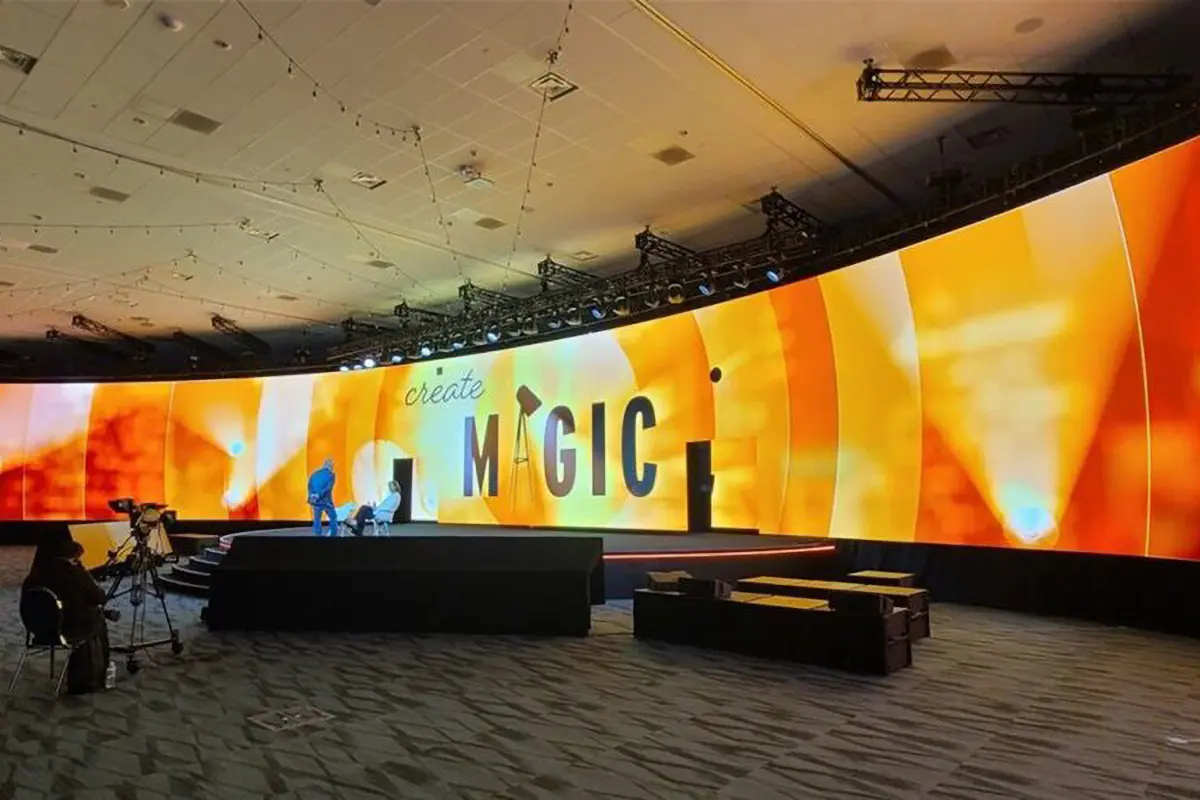
1.1 Key Features of a Giant Screen
Massive size: A giant screen can span several meters wide, even over ten meters. The goal is to ensure visibility for everyone in the audience, even those sitting on the sides or at the back.
Immersive viewing: The larger the screen, the more it surrounds the viewer. This enhances detail and draws the audience into the movie world—something a regular screen can’t easily achieve.
High brightness and clarity: Giant screens are often brighter, allowing clear visuals even under complex lighting. Their high resolution helps reduce blur or pixelation, keeping the image crisp.
Various technologies: A massive screen can be built using different technologies—such as traditional digital projection on a white screen, or modern LED panel walls.
1.2 Typical Applications of Giant Screen
Giant screens aren’t just used in cinemas. You’ll also find them in sports venues, concerts, shopping plazas, and trade shows.
- Sports stadiums: In basketball or football arenas, a massive screen is placed above or beside the field to show scores, replays, or sponsor ads.
- Concerts and live events: Giant screens are set up beside or behind the stage to zoom in on the performers, making them visible to fans far from the stage.
- Outdoor advertising: Places like Times Square in New York are famous for giant LED screens that run video ads 24/7, showcasing new products or brands.
2. What Is an IMAX Screen?
IMAX is not just a type of screen—it is a brand and a complete cinema projection system. The IMAX screen can be seen as a type of giant screen, but it differs significantly from a regular giant screen (such as CGS).
IMAX Corporation has developed a full set of technologies focused on immersive viewing experience. This includes specialized filming equipment, high-resolution projectors, specially designed large screens, surround sound systems, and specific theater design standards.
So, when you hear “IMAX screen,” it actually means a cinema screen certified by IMAX as part of its system.
In essence, IMAX belongs to the category of giant screen, but not every giant screen is an IMAX.
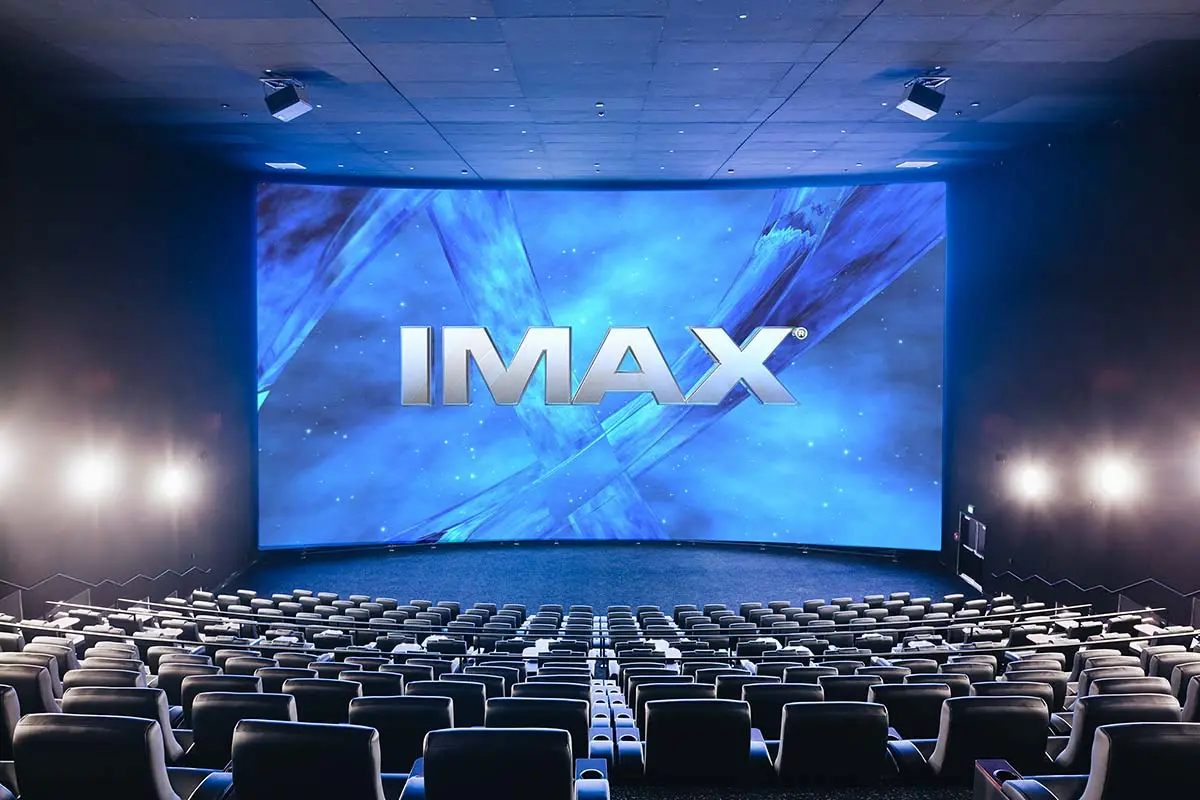
2.1 What is IMAX technology?
IMAX is more than just a “big screen.” It is a complete projection system designed specifically for an immersive viewing experience.
What you see as IMAX in a theater actually includes several key components:
Special filming and projection format: IMAX uses custom cameras that capture a wider field of view and richer details. It also has dedicated projectors that display these images on a giant screen at ultra-high resolution.
Unique screen aspect ratio: While traditional theaters often use a 2.39:1 widescreen, IMAX commonly uses taller ratios like 1.43:1 or 1.90:1. This means more vertical space and a fuller view, showing scenes you might miss in regular versions.
Surround sound system: IMAX theaters have specially tuned audio systems that do more than just deliver loud sound—they provide layers and directionality. Sound can come from above, sides, and even behind your seat, increasing immersion.
Different architecture: You may not notice, but IMAX theaters usually have steeper seating and a higher screen position. This design ensures viewers look directly at the center of the screen, avoiding looking up or down at the image.
2.2 What makes an IMAX screen special?
Although you can find large screens in many theaters, the IMAX screen really “looks different.” It is not only bigger but also has clear differences in shape, material, and viewing experience compared to regular screens.
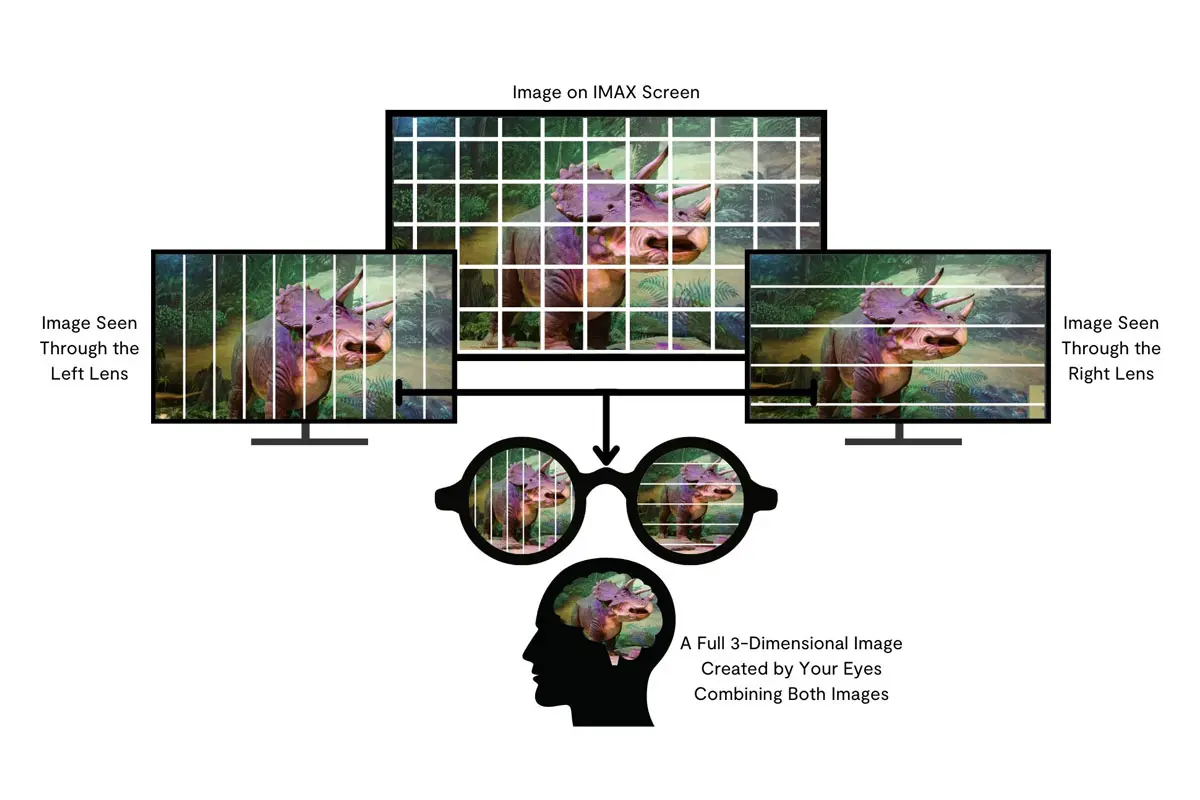
Bigger size: IMAX screens are usually taller and wider than standard theater screens, with some exceeding 20 meters in height. Visually, it feels like the screen surrounds you, rather than just “a screen across the room” like watching TV.
Curved screen shape: Many IMAX theaters use slightly curved screens instead of flat ones. This curve reduces distortion at the edges, making the view more natural whether you sit in the center or on the sides, and the image appears more uniform.
More reflective surface: IMAX uses metal-coated screens that reflect light better, which helps increase brightness and contrast. Paired with a dedicated projection system, the image stays clear and bright even on such a large display.
Thoughtful viewer angle design: IMAX theaters usually have steeper seating and place the screen closer to the audience. This layout ensures that no matter where you sit, your view covers the entire screen and you don’t miss details.
3. Giant Screen vs IMAX: What’s the Difference?
Both giant screen and IMAX refer to large screens, but they differ a lot in viewing experience and design idea. IMAX is a branded, professional system focused on delivering an immersive experience. Giant screen is a broader term for any very large screen using different technologies.
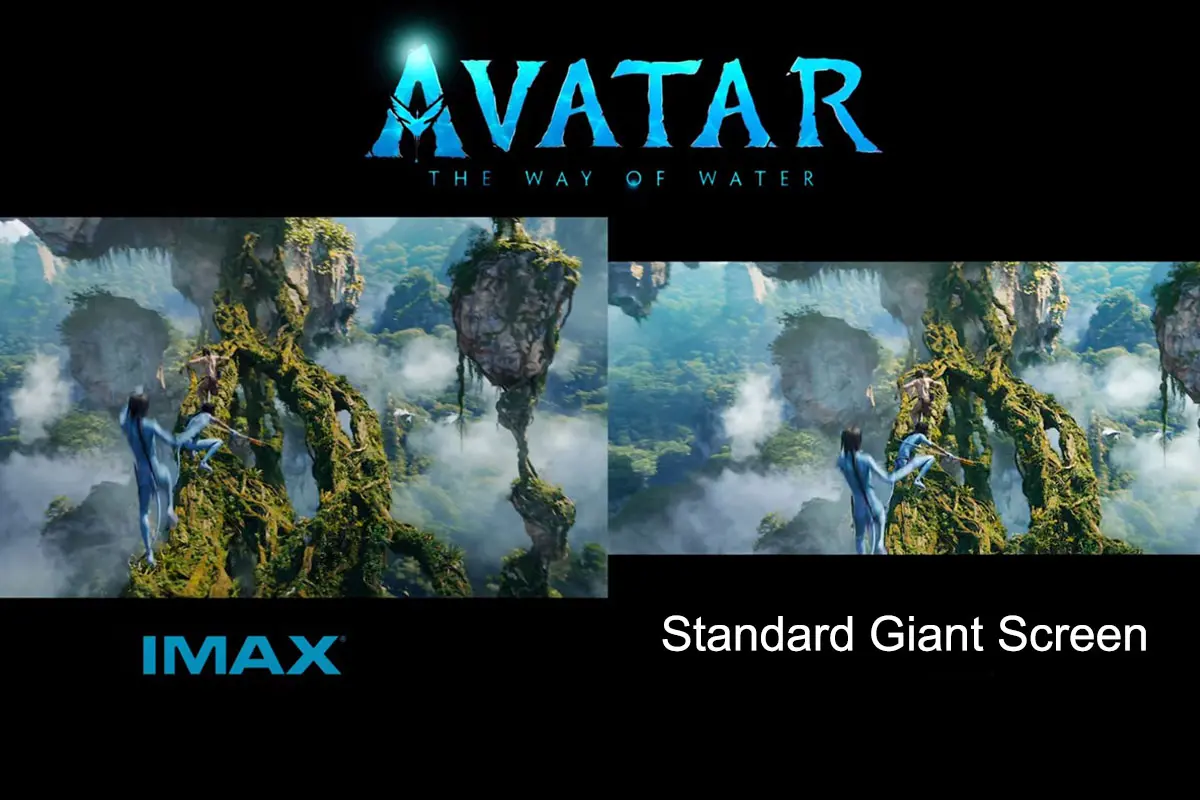
Here are some key differences to help you understand why IMAX tickets often cost more.
Picture performance
IMAX screens usually have taller aspect ratios like 1.43:1 or 1.90:1. This gives more vertical space, so you can see more details, especially in landscapes and action scenes.
Regular giant screen often uses 16:9 or wider ratios. Though large, the content might be cropped sometimes.
IMAX uses special high-resolution projectors, such as 12K laser projection, which make images sharper, brighter, and with better contrast. Even if you sit far away, you can still see rich details. Most giant screen theaters currently use 4K technology, which is not as sharp as IMAX.
Sound experience
IMAX theaters have specially designed surround sound systems. The sound has clear layers and strong direction, with effects like explosions or footsteps coming from different directions. This makes you feel surrounded by sound.
Normal giant screen theaters may have simpler sound setups. Dolby Atmos or 7.1 surround sound can also provide surround effects, but they usually are not as finely tuned as IMAX.
Immersion
IMAX theaters carefully design seat layout and viewing angles. Screens are often curved to match natural sight lines, helping viewers feel more immersed in the movie.
In contrast, many giant screen theaters use flat screens and may not optimize seat layout for immersion.
IMAX leads in 3D
IMAX offers better 3D technology than regular cinemas. It uses laser projectors and polarized glasses.
These technologies produce clearer 3D images with more detail. They reduce ghosting and double images, making the 3D experience more real and comfortable for your eyes.
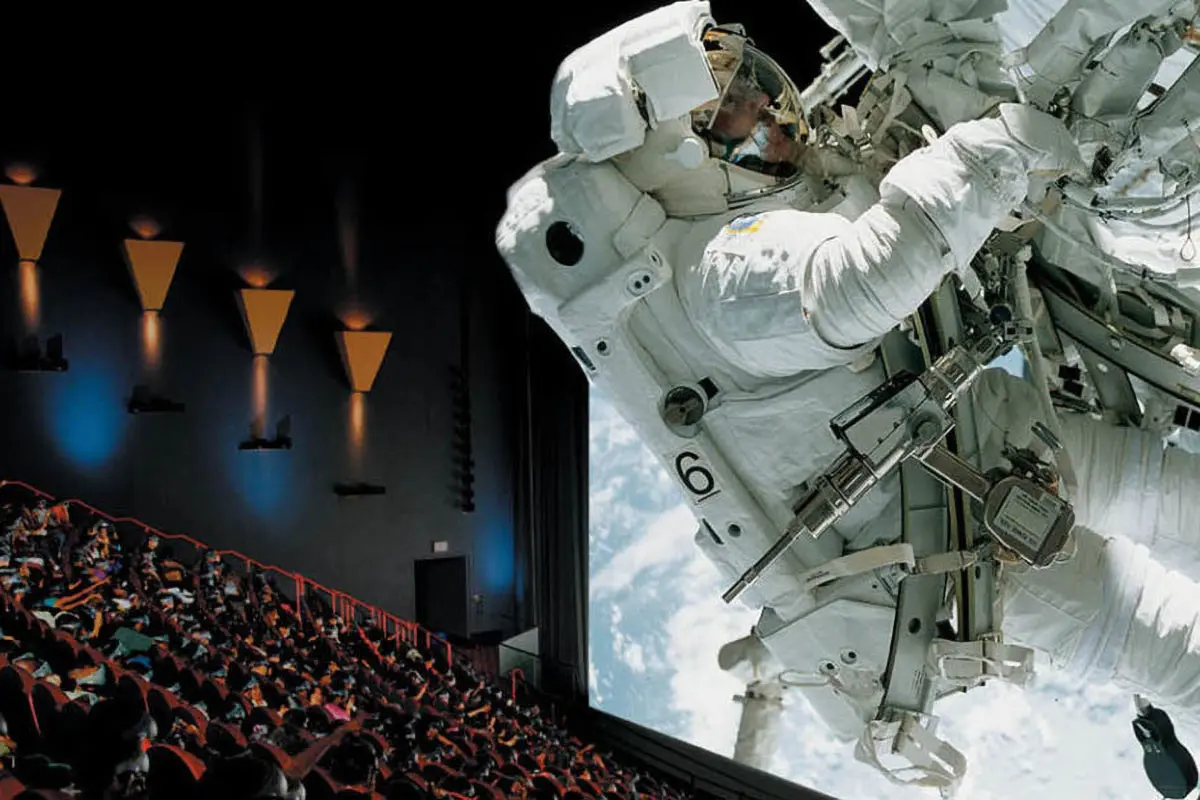
Application flexibility
IMAX mainly serves high-end cinemas and requires official authorization and strict standards.
Giant screen is more flexible. It is used in stadiums, concerts, exhibition centers, outdoor advertising, and even conference rooms.
4. How Much Does a Giant Screen or IMAX Screen Cost?
While IMAX offers a better viewing experience, it also comes with a higher price tag. Giant screen may not match IMAX in performance, but it is more flexible and budget-friendly.
4.1 IMAX Screen theater construction cost
As a globally recognized brand, IMAX screen theaters have strict standards for equipment and technology. Building a standard IMAX theater requires an equipment investment of about $1.3 million. An IMAX Laser theater using laser projection technology can cost up to $1.5 million. In addition, there is an annual brand usage and maintenance fee of about $150,000.
For example, in the Chinese market, the total investment to build an IMAX screen theater is roughly $1.7 million.
4.2 IMAX 3D technology for home theaters
IMAX 3D technology has also entered the home theater market, but at a very high cost. IMAX home theater systems range from $2.25 million to $2.75 million, mainly targeting the high-end private market.
4.3 Giant Screen theater construction cost
In comparison, giant screen theaters offer better cost performance. In China, building a giant screen theater costs about $570,000 per auditorium, roughly one-third of the IMAX theater cost. Equipment investment is usually around $140,000, depending on screen size and technology, such as traditional projection or LED panel walls.
4.4 Cost summary and recommendations
Overall, IMAX screen theaters have high construction costs due to brand and technical requirements, making them suitable for commercial cinemas seeking the top viewing experience.
Giant screen solutions are more affordable and flexible, fitting stadiums, concerts, and various other settings.
Choose the right movie theater screen solution based on your needs and budget to maximize your investment return.
5. What type of screen is used in movie theaters in 2025?
Besides the giant screen we mentioned earlier, there are actually many types of IMAX screen and other movie theater screens in use today. The choice of screens is more diverse than you might think.
5.1 Traditional Projection Screen
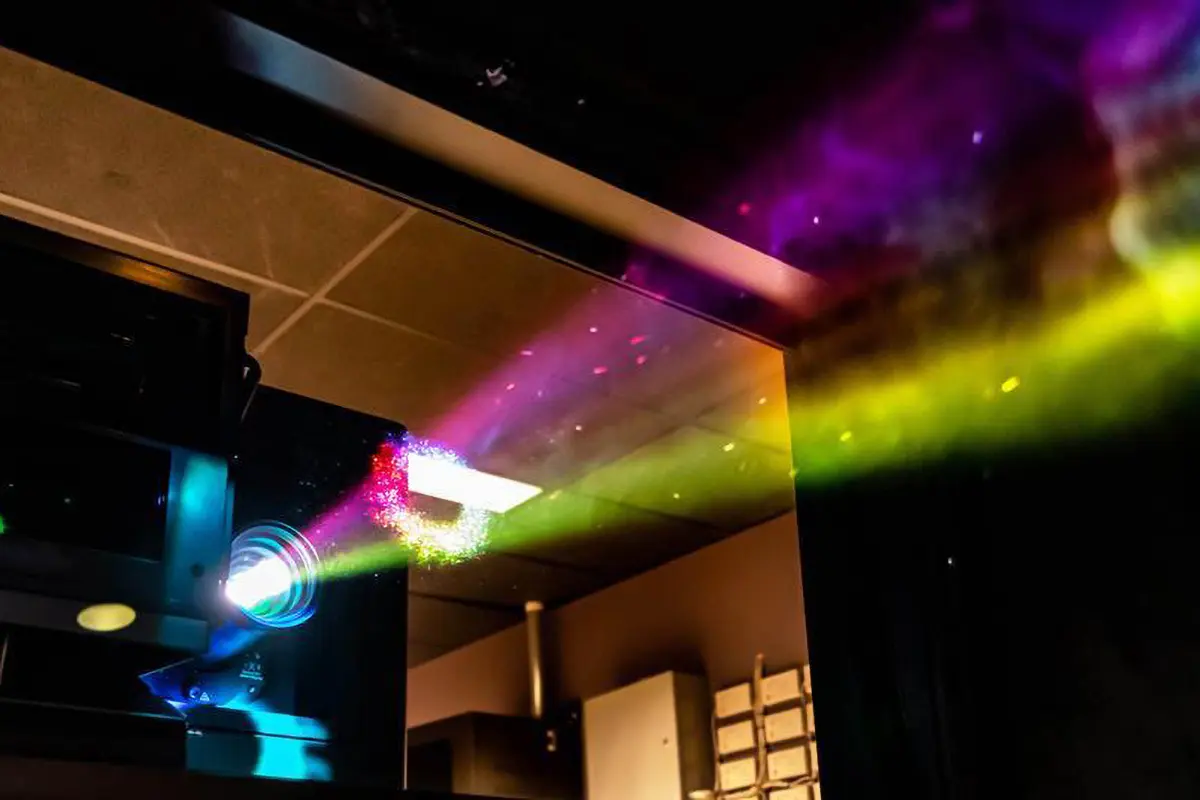
The projection screen is the classic and most widely used screen type in cinemas, especially in small to medium-sized theaters. Most auditoriums still use this kind of screen.
It usually works with traditional film projectors or modern digital projectors. The projector shines light to display the movie image on the screen, which reflects the picture for the audience to see.
This type of movie theater screen has the advantages of low cost and mature technology, suitable for playing many types of films.
However, in environments with strong light, the screen surface can reflect too much light, causing the image to look washed out or blurry. Therefore, theaters using traditional projection screens generally need to keep the environment dark.
5.2 Digital Projection Screen
The digital projection screen is specially designed for digital projectors. With the rise of digital cinema, more and more theaters have started using this screen type.
It works similarly to traditional projection screens by reflecting images projected from a projector. But digital screens use advanced materials that reflect light better, making the picture brighter, clearer, and colors more vivid.
Digital projection screens support high-definition and even 4K resolution, and can show 3D movies, offering a more realistic viewing experience.
Still, these screens also require a relatively dark environment to avoid light interference that can affect image quality.
5.3 Cinema LED Screen

Cinema LED screen is a new type of movie theater screen that has become popular in recent years. Its biggest difference from traditional screens is that it does not need a projector—it lights up by itself.
Because cinema LED screen does not rely on a projector’s light hitting a screen, it is not affected by ambient light. Even in bright rooms, the picture remains clear without washing out or blurring.
For viewers, the experience with LED movie screen is very direct:
- Higher brightness, richer colors, and deeper blacks, unlike projection screens which can look grayish.
- More detail and sharper edges, making it easier on the eyes during long watching.
- Wider viewing angles, so people sitting on the sides or close to the front can still see clear images and true colors.
- For example, in some high-end theaters, you might notice that before the movie starts, the images and trailers are especially bright and colorful. This likely means they use a cinema LED screen.
6. The Development Trend of IMAX Screen
From traditional projection screens to cinema LED screen, from 2K to 8K ultra-high definition, and from standard screens to immersive giant screen, the world of movie theater screen seems to be changing every day. Audience expectations are evolving, and theater technology is upgrading fast.
According to data from Credence Research, the IMAX screen market has huge growth potential. In 2024, its market size is estimated at $5.615 billion and is expected to reach $8.277 billion by 2032, with a compound annual growth rate (CAGR) of about 5.7%.
6.1 Giant Screen Continues to Lead the Blockbuster Market
Giant screen theaters remain the main stage for blockbuster releases and premium viewing experiences. Movie producers and distributors usually see giant screen theaters (like IMAX screen) as key venues for premieres and major promotions. Premiering in giant screen theaters maximizes the visual impact and word-of-mouth, helping boost box office sales.
Also, although IMAX giant screen tickets are more expensive, they attract many viewers willing to pay extra for high-quality experiences. For example, during the re-release of “Avatar,” many fans chose to pay more to watch it in IMAX theaters to fully enjoy the 3D effects.
6.2 Cinema LED Screen’s Rapid Rise
According to Wise Guy Reports, the cinema LED screen market size was about $2.7 billion in 2023. It is expected to grow rapidly starting in 2024, reaching around $16.9 billion by 2032, with an annual CAGR close to 23%.
The market for cinema LED screens over 100 inches was $1.5 billion in 2024 and is expected to reach $2.5 billion by 2032. This shows cinema LED screen has a strong chance to become the new giant screen.
With higher brightness, wider viewing angles, and more realistic colors, cinema LED screen solves problems of traditional projection like environmental light interference and insufficient brightness. Compared to traditional projection, LED screens do not need bulb replacements, have lower maintenance costs, and longer lifespans.
Especially in high-end and outdoor cinemas, LED cinema screens are becoming mainstream, driving movie theater screen technology into a new era.
6.3 Movie Theater Screens Move Toward 4K/8K and HDR
Ultra-high resolutions like 4K and 8K, along with HDR technology, are key to upgrading movie theater displays. 4K screens have become common in most mid-to-high-end theaters. Theaters with less than 4K are no longer competitive because they cannot meet audiences’ demand for high-quality images.
8K technology is maturing and being tested in some theaters. However, 8K projectors and compatible screens are much more expensive than 4K equipment, so many theaters cannot afford them yet.
HDR is one of the main drivers of growth in the global LED cinema screen market, especially in high-end screens over 100 inches. With ongoing improvements, HDR may become a standard feature in future premium theaters.
6.4 Diverse Viewing Scenarios Emerge; Small Screens Still Have Stable Market
The traditional movie theater model is now complemented by more flexible options. You don’t have to go to a cinema to watch movies anymore. Home theaters, community screening rooms, and even mobile viewing devices create ongoing demand for smaller screens under 50 inches.
7. Is Cinema LED Screen Better Than Giant Screen?
From giant screen to IMAX, and now from IMAX to cinema LED screen, the leading role in movie theater screens is quietly shifting. The cinema LED screen shows great market potential. Many theaters have high expectations and are investing more and more. Some even say cinema LED is the future of movie theaters!
But giant screen technology keeps improving, and IMAX remains the top choice for 3D blockbusters. Can cinema LED screen really surpass them?
7.1 Compared with Giant Screen (including IMAX), what are the advantages of Cinema LED Screen?
Brightness and color impact: Peak brightness of cinema LED screen can be up to 10 times that of a regular theater. It covers nearly 100% of the DCI-P3 color gamut. The images are bright and vivid, as if HDR scenes come alive in the theater.
Contrast (dark scenes): Blacks are pure and deep. The Milky Way really shines. Details in dark scenes are clear, without the halos or light leakage common in traditional projection. For example, stars and night scenes in movies like Interstellar and Dune are sharp and distinct.
Picture detail: When sitting close, even actors’ pores can be seen clearly. However, some viewers say that if you sit too close or the pixel pitch is large, pixel structure becomes noticeable.
Ambient light resistance: LED’s self-lighting nature makes it highly resistant to ambient light. Even with doors opening, people moving, or changing light conditions, the picture remains bright and clear without interference.
Content compatibility: Supports multiple resolutions and video formats from 2K to 8K. No complex optical path adjustments needed. Content switching is fast and flexible.
7.2 Who Will Shape the Future of Movie Theater Screens?
Based on current trends, cinema LED screen is gaining more recognition from theaters and audiences due to its high brightness, excellent picture quality, and strong flexibility. It has huge market potential in the future.
However, giant screen technology is not standing still. Especially IMAX, with its leadership in 3D blockbusters and immersive viewing experience, remains hard to surpass in the short term.
Therefore, I believe the future of movie theater screens will be diverse and coexist. Cinema LED represents the cutting edge of technology and is an important direction for future theater development.
IMAX remains an irreplaceable classic experience, relying on its mature projection system and brand influence to maintain its position in the high-end market.
In contrast, traditional projection screens will gradually become marginal, with shrinking market share and influence.
8. FAQ
9. Conclusion
Both giant screen and IMAX belong to the category of ultra-large screens. However, IMAX has stricter technical standards and theater design requirements. Meanwhile, many cinemas are investing more in cinema LED screen, which has a promising future.
If you are interested in imax screen, we are happy to provide you with professional advice.




